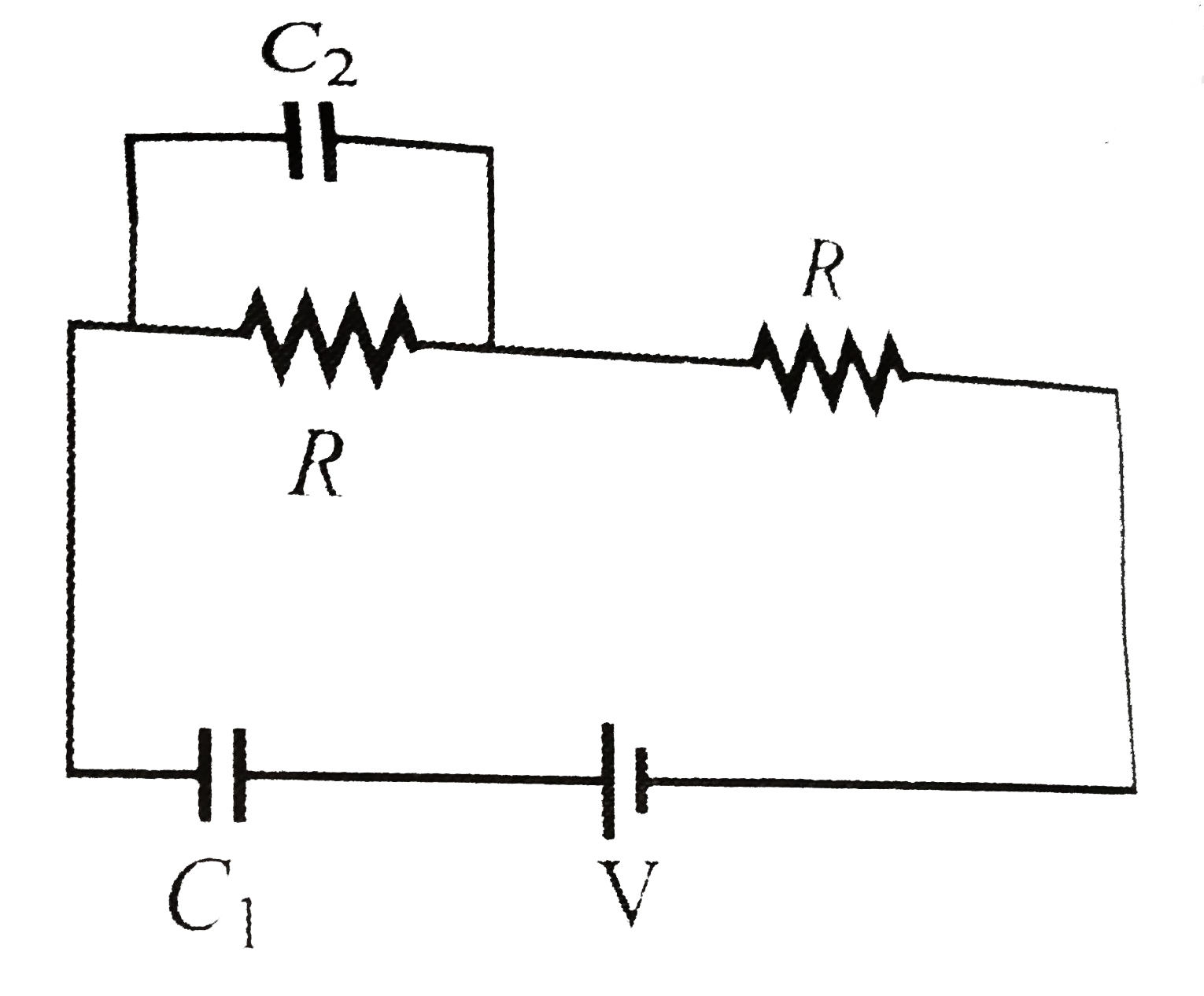Capacitor C1 of capacitance 1 micro-farad and capacitor C2 of capacitance 2 microfarad are separately charged fully by a common battery. The two capacitors are then separately allowed to discharged through equal resistors at time t = 0.
(i),(iv)
(ii),(iv)
(iii),(iv)
(i),(ii)
The correct Answer is:A
C1=1μF,C2=2μF
q=q0e−t/RC
q1=C1Ee−t/RC1⇒i1=dq1dt=ERe−t/RC1
q2=C2Ee−t/RC1⇒i2=−dq2dt=ERe−t/RC2
t=0.i1=i2(i) is O.K.
q1=C1Ee−t/RC1⇒C1E2=C1e−t1/R×1
et1/R=2⇒t1=R1n2
q2=C2Ee−t/RC2⇒C2E2=C2Ee−t2/2R
et2/2R=2⇒t2=2R1n2
t1<t2(iv) is O.K.
Topper's Solved these Questions
- BOOK - CP SINGHCHAPTER - THERMAL AND ELECTRIC EFFECT oF CURRENTEXERCISE - Exercises101videos
THERMAL AND ELECTRIC EFFECT oF CURRENT
- BOOK - CP SINGHCHAPTER - SEMICONDUCTORSEXERCISE - Exercises140videos
SEMICONDUCTORS
- BOOK - CP SINGHCHAPTER - WAVE NATURE OF LIGHTEXERCISE - EXERCISES140videos
WAVE NATURE OF LIGHT
Similar Questions
A capacitor C1 of capacitance 1μF and a capacitor C2 of capacitance 2μF are separately charged by a common battery for a long time. The two capacitors are then separately discharged through equal resistors. Both the discharge circuits are connected at t=0.
View SolutionA capacitor of capacitance 500(μ)Fis connected to a battery through a (10k(Ω)) resistor.The charge stored on the capacitance 2(μ)F are separately charged by a common battery for a long time. The two capacitors are then separately discharged through equal resistors.Both the discharge circuits are connected at t=0.
View Solution
Knowledge Check
- Question 1 - Select One or More
Capacitor C1 of the capacitance 1μF and another capacitor C2 of capacitance 2μF are separately charged fully by a common battery.The two capacitors are then separately allowed to discharge through equal resistors at time t=0.
AThe current in each of the two discharging circuits is zero at t=0BThe current in the two discharging circuits at t=0 are equal but not zeroCThe currents in the two discharging circuits at t=0 are unequalDCapacitor C1 loses 50% of its initial charge sooner than C2 loses 50% of its initial charge - Question 2 - Select One
Capacitor C1 of the capacitance 1μF and another capacitor C2 of capacitance 2μF are separately charged fully by a common battery.The two capacitors are then separately allowed to discharge through equal resistors at time t=0.
AAt t = 0 the value of current in the circuit containing 1μF is more than current in the circuit containing 2μFBAt t = 0 the current in 2μF capacitor circuit is more than current in 1μF capacitor circuitC1μF capacitor losses 50 % charge sooner than 2μF capacitorD2μF capacitor losses 50 % charge sooner than 1μF capacitor - Question 3 - Select One or More
Capacitors C1=1μF and C2=2μF are separately charged from the same battery. They are allowed to discharge separately through equal resistors
AThe currents in the two dicharging circuits at t=0 is zeroBThe currents in the two discharging circuits at t=0 are equal but not zeroCThe currents in the two discharging circuits at t=0 are unequalDC1 loses 50% of its initial charge sooner than C20 loses 50% of its initial charge.
A capacitor of capacitance C1 is charged to a potential V1 , while another capacitor of capacitance C2 is charged to a potential difference V2 . The capacitors are now disconnected from their respective charging batteries and connected in parallel to each other
Find the total energy stored in the two capacitors before they are connected .View SolutionA capacitor of capacitance C1 is charged to a potential V1 , while another capacitor of capacitance C2 is charged to a potential difference V2 . The capacitors are now disconnected from their respective charging batteries and connected in parallel to each other
Find the total energy stored in the parallel combination of two capacitors.View SolutionReactance of a capacitor of capacitance 1/π farad at 50 Hz is
View SolutionTwo capacitors C1=2mFandC2=8mF are seperately charged from the same battery. These two capacitors are then allowed to discharge separately through resistors of same resistance with a switch in series which are kept open initially. Both switches are closed at t = 0.
View SolutionCharge on the capacitor having capacitance C2 in steady state is
 View Solution
View Solution

